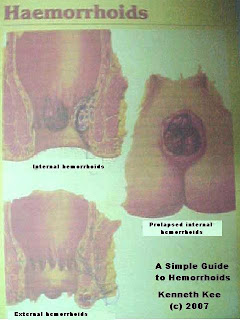
A Simple Guide to Scabies
-----------------------------
What is Scabies?
--------------------
Scabies is a contagious skin disease caused by the mite Sarcoptes scabiei characterised by intraepidermal burrows, itchiness and secondary skin infections.
The female mite burrows into the skin and deposits her eggs and faeces. The eggs hatch in 3-4 days into larvae which then becomes nymphs, moulting to adults mites in 14 days.The skin becomes extremely itchy and red lesions appear in the skin.
Retirement and nursing homes are ideal breeding grounds for the parasite, which needs a human host to survive. Some child care centres may also be the place for spread of the skin parasite.
What are the Symptoms of Scabies?
------------------------------------------
1.itching which is worse at night
2.characteristic burrow lines on the skin with papule at one end.
3.rashes and abrasions on the skin due to scratching and secondary infections.
Rashes typically are present on legs and arms, sometimes on the body , seldom on the face. Rarely it may be present on the scalp. Mode of transmision is by direct contact with a person with scabies.
How to confrim the diagnosis of Scabies?
------------------------------------------------
Skin scrapings can be examined microscopically for the scabies parasite.
What is the Treatment of Scabies?
----------------------------------------
Scabicides (chemicals to treat scabies) actually contain mild insecticide :
Benzyl benzoate lotion
Malathion lotion
Gamma benzene hexachloride cream
Permethrin cream
Bathing is followed by application of the scabicide to the whole body from the neck to soles, left for 24 hours.
For some children under 2 years, the elderly in rest homes and others with reduced resistance, the scalp and face also needs to be treated.
A single overnight application of the scabicide(8 hours) is washed off the following morning .A second application four to seven days later is often recommended.
Treatment of contacts may be required if there is obvious signs of scabies.
While the scabies mite cannot live off the human skin for longer than 24 hours, each treatment with scabicide should be accompanied by washing, in hot water, of bedsheets, pillow cases and any clothes worn over the previous week.
Most people improve within a few days of treatment but it may take 4-6 weeks for the itch and rash of scabies to go away completely.
-----------------------------
What is Scabies?
--------------------
Scabies is a contagious skin disease caused by the mite Sarcoptes scabiei characterised by intraepidermal burrows, itchiness and secondary skin infections.
The female mite burrows into the skin and deposits her eggs and faeces. The eggs hatch in 3-4 days into larvae which then becomes nymphs, moulting to adults mites in 14 days.The skin becomes extremely itchy and red lesions appear in the skin.
Retirement and nursing homes are ideal breeding grounds for the parasite, which needs a human host to survive. Some child care centres may also be the place for spread of the skin parasite.
What are the Symptoms of Scabies?
------------------------------------------
1.itching which is worse at night
2.characteristic burrow lines on the skin with papule at one end.
3.rashes and abrasions on the skin due to scratching and secondary infections.
Rashes typically are present on legs and arms, sometimes on the body , seldom on the face. Rarely it may be present on the scalp. Mode of transmision is by direct contact with a person with scabies.
How to confrim the diagnosis of Scabies?
------------------------------------------------
Skin scrapings can be examined microscopically for the scabies parasite.
What is the Treatment of Scabies?
----------------------------------------
Scabicides (chemicals to treat scabies) actually contain mild insecticide :
Benzyl benzoate lotion
Malathion lotion
Gamma benzene hexachloride cream
Permethrin cream
Bathing is followed by application of the scabicide to the whole body from the neck to soles, left for 24 hours.
For some children under 2 years, the elderly in rest homes and others with reduced resistance, the scalp and face also needs to be treated.
A single overnight application of the scabicide(8 hours) is washed off the following morning .A second application four to seven days later is often recommended.
Treatment of contacts may be required if there is obvious signs of scabies.
While the scabies mite cannot live off the human skin for longer than 24 hours, each treatment with scabicide should be accompanied by washing, in hot water, of bedsheets, pillow cases and any clothes worn over the previous week.
Most people improve within a few days of treatment but it may take 4-6 weeks for the itch and rash of scabies to go away completely.






